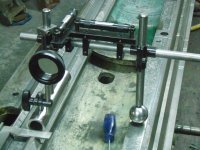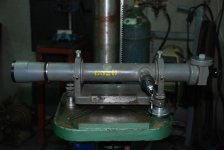Pete F
Titanium
- Joined
- Jul 30, 2008
- Location
- Sydney, Australia
G'day guys, I haven't used an autocollimator before and wondered if there was any online material on the basics of using one in the context of machine tool surveying etc. So far I have only got as far as the basic "sketch" type diagrams that explain the principle of autocollimation but nothing really further. The only other thing I've seen are text books, which probably contain more depth and detail than I'll need. This optical side is all a bit of a mystery to me to be honest and I don't understand the difference between an autocollimator, an alignment telescope, and an autocollimating alignment telescope. I'd be grateful to be pointed in the right direction as to where I could read more about this field.
Thanks very much for the help.
Pete
Thanks very much for the help.
Pete




